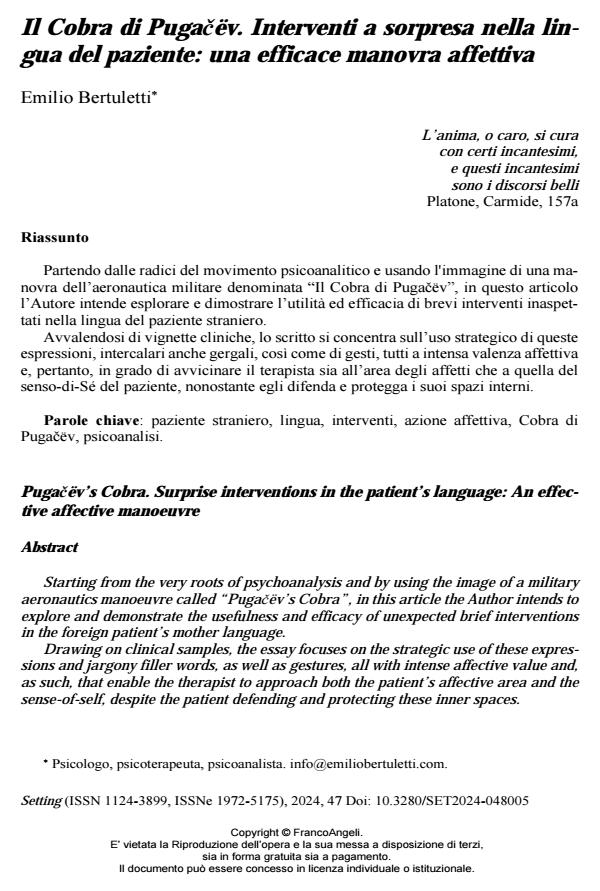Pugačëv’s Cobra. Surprise interventions in the patient’s language: An effective affective manoeuvre
Journal title SETTING
Author/s Emilio Bertuletti
Publishing Year 2024 Issue 2024/48
Language Italian Pages 20 P. 137-156 File size 263 KB
DOI 10.3280/SET2024-048005
DOI is like a bar code for intellectual property: to have more infomation
click here
Below, you can see the article first page
If you want to buy this article in PDF format, you can do it, following the instructions to buy download credits

FrancoAngeli is member of Publishers International Linking Association, Inc (PILA), a not-for-profit association which run the CrossRef service enabling links to and from online scholarly content.
Starting from the very roots of psychoanalysis and by using the image of a military aeronautics manoeuvre called “Pugačëv’s Cobra”, in this article the Author intends to explore and demonstrate the usefulness and efficacy of unexpected brief interventions in the foreign patient’s mother language. Drawing on clinical samples, the essay focuses on the strategic use of these ex-pressions and jargony filler words, as well as gestures, all with intense affective val-ue and, as such, that enable the therapist to approach both the patient’s affective area and the sense-of-self, despite the patient defending and protecting these inner spaces.
Keywords: foreigner patient, language, intervention, affective action, Pugachev’s Cobra, psychoanalysis.
Emilio Bertuletti, Il Cobra di Pugacëv. Interventi a sorpresa nella lingua del paziente: una efficace manovra affettiva in "SETTING" 48/2024, pp 137-156, DOI: 10.3280/SET2024-048005